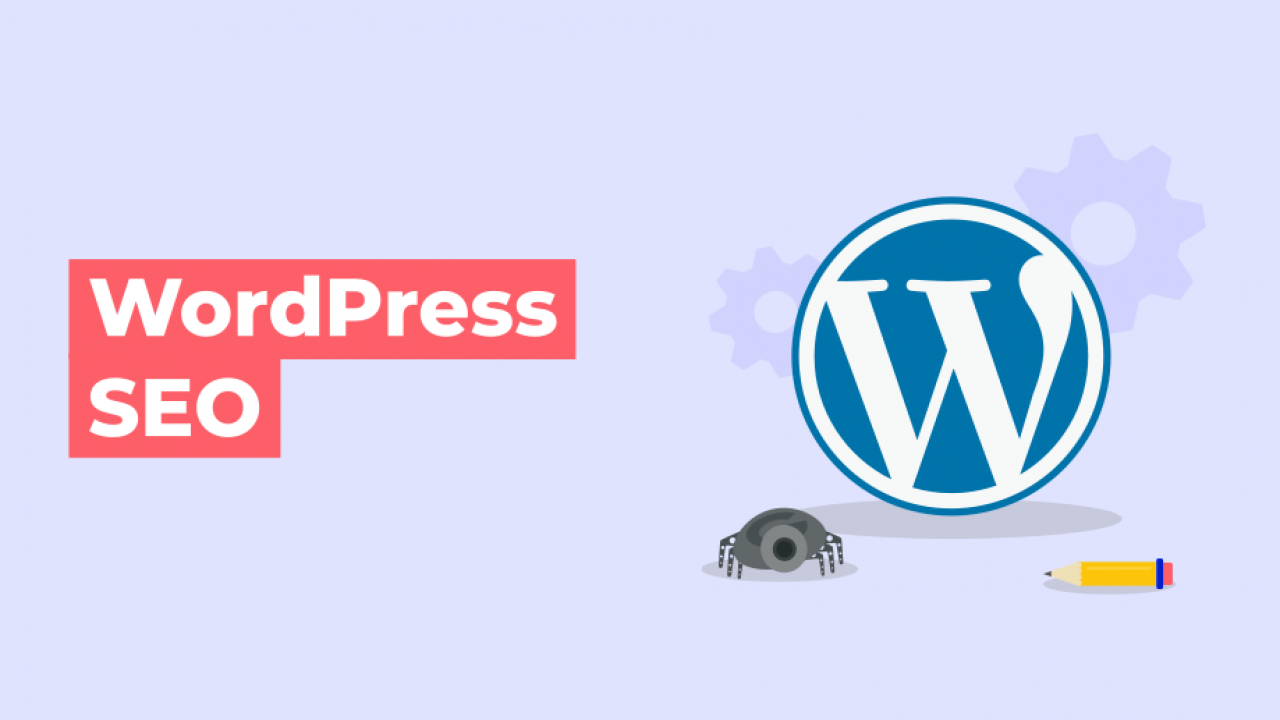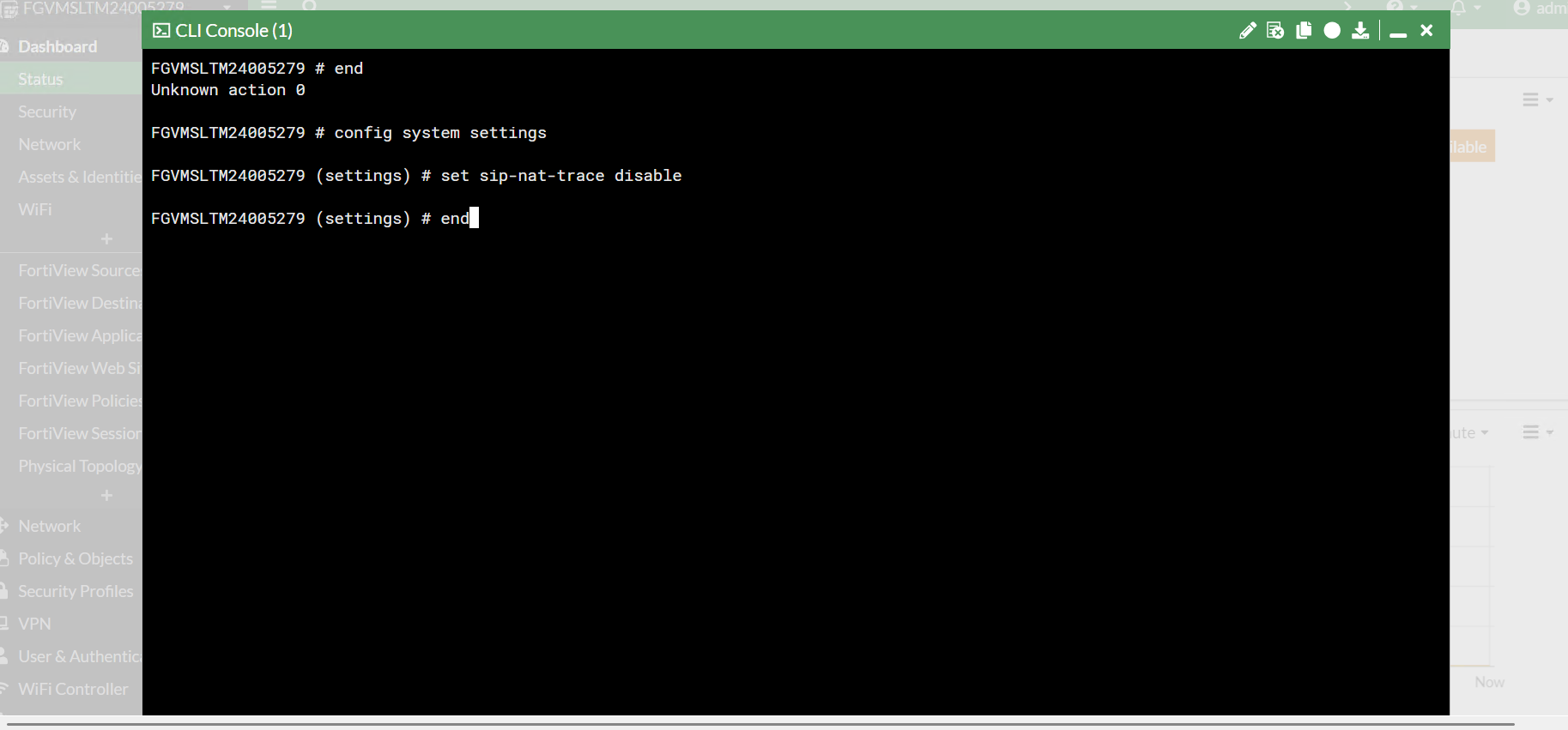For businesses in Dubai, SEO services are essential for boosting their online presence and driving organic traffic. Partnering with a trusted SEO agency in Dubai is vital for leveraging local SEO strategies tailored to the region’s unique dynamics. A leading SEO company in Dubai offers comprehensive SEO services, including website optimization, customizable SEO packages, and strategic SEO marketing initiatives. With a team of experienced SEO professionals, these agencies navigate search engine algorithms to improve website rankings and enhance brand visibility. By working with a dedicated SEO agency in the UAE, businesses can fully utilize their online presence and achieve steady growth in the digital realm. WordPress SEO Tips for UAE:
If you have a self-hosted wordpress.org site, these WordPress SEO tips can help you improve search engine rankings and traffic:
1. Choose a Quality Hosting Provider
Your hosting affects many things related to SEO—especially site speed, uptime, and security. So give it some thought before starting a website.
If you already have a web hosting service and you’re not quite happy with it, you can always change it. Most quality hosting providers will be more than happy to help you migrate your website from their competitor.
Here are some things to consider when picking a hosting provider:
- High uptime: Downtime happens to the best hosting providers. But if your website is unavailable too often, it hurts your reputation and business.
- WordPress friendliness: The hosting should be compatible with WordPress websites. Most quality providers offer some kind of plan tailored to WordPress needs.
- Free SSL: A free SSL certificate is a must-have hosting feature because it enables the secure HTTPS encryption of your website.
- Location of a server: For example,if you primarily target UAE customers, you want the server to be located in the UAE so that the website loads faster for them.
- Quality support: Helpful and responsive support makes everything easier.
In the UAE, one of the hosting providers recommended by WordPress is SiteGround. They offer reliable hosting services with data centers located around the world, including one in London which can serve users in the Middle East region effectively. SiteGround is known for its excellent customer support, high performance, and security features. They also provide WordPress-specific hosting plans with easy installation and management tools, making it a popular choice among WordPress users in the UAE and beyond.
2. Use an SEO-Friendly WordPress Theme
When you first install WordPress, you will almost certainly see the platform’s default “Twenty Twenty-Something” theme. However, you’ll probably want to explore different themes to personalize your site.
And you’ll want to make sure the theme you choose is lightweight and loads fast. Because when it comes to SEO, website performance is critically important.
Thousands of free themes are available in the official WordPress theme library (as well as many more premium ones).
Note: Although WordPress has its own built-in editor called Gutenberg, many WordPress users prefer third-party page builders (like Elementor, Beaver Builder, Divi, etc.). They offer many great features, but they also affect the performance of your website. Keep that in mind when choosing one.
3. Make Sure Your Website Is Indexable
Having an indexable site means Google is able to index it and display it in its search results.
You need to check your site’s visibility settings under Settings > Reading.
Here, you will see a checkbox right next to the “Search engine visibility” section at the bottom of the page:
The box should not be checked by default. But developers commonly use it to discourage search engines from indexing the website while it’s under development.
If your website is live and ready to be ranked on Google, the box should be unchecked.
Note: You may check the box if your website is still in development; just don’t forget to uncheck it later.
4. Set Up an SSL Certificate
Using a secure HTTPS connection is an absolute must. It is a confirmed ranking factor—so it can help your site rank better on Google.
And you surely don’t want your website to appear as “Not Secure” in the web browser:
To secure your website’s connection, you need to encrypt it with an SSL (Secure Sockets Layer) certificate. This ensures that data passing through your site is securely encrypted.
Don’t worry. It’s easier than it sounds:
1.Go to your hosting provider’s admin panel. (You’ll need to log in to your hosting administration first.)
2.Look for “Security”or “SSL certificate” settings. If you can’t find it, just Google “[name of your host] ssl certificate settings”. Most WordPress hosting providers offer a free SSL certificate called Let’s Encrypt.
3.Select and install the certificate.
To ensure the SSL certificate is recognized and used correctly on your WordPress website, you can install the Really Simple SSL plugin.
In your WordPress control panel, click “Plugins” in the left menu. Then, click “Add new” and search for “really simple ssl.” When you find Really Simple SSL, click the “Install Now” button.
Then hit the “Activate” button and follow the plugin’s instructions for the basic settings.
Warning: If your website has been up and running without an SSL certificate for a while, you may need a developer’s help to ensure everything is set up correctly.
Congratulations! Your site is encrypted now. WordPress SEO Tips for UAE
5.Pick Your Preferred Site Address Format
Next, you should pick what web address format you want to use.
In other words:
Do you want your URL to be https://www.yourdomain.com? Or do you prefer the non-www https://yourdomain.com format?
Here are a few notes on this topic:
- Google takes www and non-www versions as two separate URLs. You need to pick one to prevent issues with duplicate content.
- There are minimal SEO implications of using either format (as long as you stick to only one version).
- Historically, all URLs included www. Today, many websites drop it. But it is really up to your preference.
In the left menu, go to Settings > General and type in your preferred format in both the “WordPress Address” and “Site Address” fields:
6. Enable SEO-Friendly Permalinks
Creating more descriptive permalinks can help search engines and human users understand your pages better.
For example, the URL of this post—https://semrush.com/blog/wordpress-seo—clearly indicates that this page is about WordPress SEO. If someone would only see the URL, they would still know what to expect.
By default, WordPress uses a “plain” URL structure that looks something like this: https://sermush.com/blog/?p=7255
Which is not exactly the best solution …
The best permalink format to pick in WordPress settings is the “Post name” structure. It means WordPress will use the title of the post to create the URL.
(And you can edit the URL in the post editor to make it even shorter and easier to read.)
Go to Settings > Permalinks and select “Post name.” WordPress SEO Tips for UAE
Note: If you’re changing the permalink structure on an established website, be aware of possible issues—mainly 404 (Page Not Found) errors. To avoid these, you’ll have to use redirects for all the old URLs.
7. Install and Configure a WordPress SEO Plugin
A WordPress SEO plugin can make it easier for you to configure some basic SEO settings and follow best practices.
Three of the most popular free WordPress SEO plugins are:
- Yoast SEO
- All in One SEO
- Rank Math
To install Yoast SEO, go to your WordPress control panel. Then, click on “Plugins” in the left menu and the “Add new” button.
Search for “yoast seo” and click the “Install Now” button when you find it. Then, click “Activate.”
Configuring Yoast SEO
After the activation, the plugin will prompt you to go through the “First-time configuration.”
During this process, you’ll:
- Run Yoast’s SEO data optimization function
- Provide basic information about your website
- Connect your social profiles
Besides these, it is also a good idea to go to Yoast SEO > Search Appearance > Title Separator to choose what symbol will be used as your title tag separator. WordPress SEO Tips for UAE
8.Plan the Architecture of Your Site
If you’re doing WordPress SEO right, you’ll have a simple site architecture with a clear hierarchy of pages.
A good site architecture makes your website easier for search engines to crawl. And for visitors to navigate.
To achieve this, plan ahead. You can simply use a pen and paper. Or a Google Sheet. We love using a mind mapping platform like MindMeister for this.
Just create a free account and select the “Org Chart” template (as it provides a good visual representation of a website structure):
Then, you can start planning your website’s architecture by writing down and nesting all the pages and categories the website might have.
Your pages should be easy to reach in as few clicks as possible. A good rule to follow is that no page or post should require more than three clicks to reach from the homepage. WordPress SEO Tips for UAE
9.Create an Easy-to-Navigate Menu
A menu is a crucial navigational element of any website. It helps your visitors find the most important pages.
It is also important for SEO. Because it provides further information about the structure of your website and its key pages.
Your main menu should be:
- Clear: Do not overwhelm your users with too many menu items. Consider creating sub-menusor moving less used items to the footer menu.
- Simple and helpful: Always follow the “user comes first” principle. Try to step into your visitor’s shoes and make sure the navigation is 100% understandable.
- Predictable: Do not experiment. Includeitems people (and search engine crawlers) expect to find in a menu and use traditional names (like “Pricing” instead of “How much will it cost” or “Blog” instead of “Field notes”). WordPress SEO Tips for UAE
To create a menu in WordPress:
1. Go to Appearance > Menus > edit your menu or click the “Create a new menu” link.
2. Add pages (or other types of content) to your menu in the “Add menu items” section.
3. Drag and drop the menu items to change their order and/or rename them in the ‘Menu structure’ section.
To make the menu appear in the website’s header, don’t forget to mark it as “Primary Menu” in the settings at the bottom:
You can create multiple menus in the “Menus” section of WordPress (e.g., a footer menu, standalone blog navigation, etc.). Their implementation will depend on your theme and/or page builder. WordPress SEO Tips for UAE
10. Use Post Categories Correctly
Categories are a useful way to:
- Organize your blog posts into logical groups: Becausecategories can be nested, they provide a unique opportunity to create a hierarchy within your blog topics.
- Improve the internal linking of your website: Your category archive pages can become useful content hubs interlinking all the relevant posts covering one topic.
- Help visitors find other relevant posts: Categorization of your posts allows you to show related posts to your readers.
Since categories are compulsory for WordPress posts (if you don’t assign a category to your post, WordPress will use the default “Uncategorized” one), you might as well get the most out of them.
Assigning a category to your post is easy. Open the page’s Editor and scroll to the Categories section in the right panel.
Note: Another type of WordPress taxonomy is a tag. Tags can help you group posts from different categories based on a common subtopic. However, tags are not obligatory and aren’t as popular as they used to be.
Finally, let’s take a look at what you can do to optimize your WordPress categories … WordPress SEO Tips for UAE
Using a Reasonable Number of Categories
There are no restrictions when it comes to the number of categories you can use.
However, to make your blog easy to browse without overwhelming the reader, the ideal number is somewhere between five and 10 categories.
Let’s take a look at the categories used on Semrush blog:
The parent categories like “SEO” or “Marketing” provide the basic categorization. Then, each category has subcategories that further group related content.
For example, the “SEO” category has subcategories like “Keyword Research,” “On-Page SEO,” and “Link Building.”
Try to create categories broadly. That way, you don’t end up with categories with only a couple of posts.
Tip: You can’t delete the default “Uncategorized” category. But you can avoid using it or rename it.
11.Optimizing Category Pages
Each category archive page should have a short description. This allows you to introduce the category to readers and provide unique content for search engines.
To add a description to your category page, go to Post > Categories > and click “Edit.
Then, describe your category in a couple of sentences in the “Description” field:
As we mentioned earlier, category archive pages can create great content hubs (serving as “topic gateways” for various topics on your blog).
That’s why you may want them to be indexed and appear in the SERPs (search engine results pages).
To have good-looking snippets in the search results, you should optimize the title tags and meta descriptions of your category pages. WordPress SEO Tips for UAE
12.Do Keyword Research
One of the most essential WordPress SEO tasks is to find the keywords your audience types into Google so you can target them and get relevant traffic.
This process is called keyword research.
Finding Keywords
The easiest way to find relevant keywords is to look at what your competitors rank for. In Semrush, there’s a dedicated tool for this. It’s called Keyword Gap.
Let’s say you run a web design agency and you’re looking for topic ideas for your blog.
All you need to do is to enter your domain and up to four domains of your competitors. (The tool will suggest some, or you can type them in manually.)
Choosing Keywords
Now that you’ve found the keywords, you’ll need to take a closer look at their metrics to choose the target keywords—keywords that will best represent your respective pages or posts.
To choose target keywords, you’ll need to take a closer look at their metrics. Namely:
1.Search volume: How often do people search for the keyword?
2.Keyword difficulty (KD): How hard is it to rank for the keyword?
3.Search intent: What kind of content do people expect when using the keyword in their search?
In both Keyword Gap and Keyword Magic, you can see all these metrics in a table that allows you to prioritize and filter your keywords easily.
Once you find your ideal target keyword for a page or post, optimize the content for that target keyword.
That doesn’t mean stuffing the keyword everywhere.
Instead, include the target keyword (or its variants) in some of the key elements of the page. Such as:
- Headers
- Title tag
- Body
- Inbound internal links
13.Create Great Content
Quality content is a general SEO requirement (not connected only to WordPress SEO). But it’s so essential that we can’t omit it in this guide.
Let’s dive in …
Nailing Search Intent
Nailing search intent means making sure your page provides exactly what a user is looking for.
A great way to start is to analyze the SERP of your target keyword.
The SERP analysis will help you to nail search intent by:
- Picking the right type of content: You’ll see what type of content ranks for the keyword (e.g., landing pages, reviews, informational posts, etc.) so you can also target it with the right type of content
- Understanding the topic better: You’ll see many of the questions a user might have so you can answer them in your content
- Analyzing your competitors: You’ll be able to see what pages rank for the keyword so that you can get inspiration from them
- Finding opportunities to provide added value: Seeing what your competitors have published can help you come up with ways to stand out from them(by providing a unique angle, data, examples, media, etc.)
Optimizing for Readers
Many people focus too much on optimizing content for search engines and forget about their readers. These two goals are not exclusive. By improving the user experience, you’ll also improve your SEO. And vice versa. WordPress SEO Tips for UAE
14.Write SEO-Friendly URLs
The problem with long URLs is that they’ll probably be truncated in search results. Which is not a great look:
By default, WordPress uses your page’s titles to create URLs. As a result, the URLs on your site can become lengthy.
For example, a URL of a post about puppy training could look like this by default.
To create a more SEO-friendly URL, scroll down to the “Permalink” section in the page/post editor and change the “URL Slug.”
Alternatively, you can change URLs in the Yoast SEO settings at the bottom of the editor. The plugin will also show a live snippet preview:
Here are some other tips for creating SEO-friendly URLs:
- Keep it short: It looks better, and it won’t be truncated in search results
- Include the target keyword: This helps users quickly figure out what the page is about, and it’s a minor ranking factor
- Don’t include numbers (unless you’re 100% sure they won’t change):If the number in the post (e.g., number of tips or the year) changes in the future, you would have a URL that is inconsistent with your content
15.Use Headers Correctly
Headers are some of the most important elements in the structure of a single page:
- They create a clear hierarchy of the page’s content
- They communicate what the page is about
- They break up the text to make it easier to read
To add headings in the WordPress Gutenberg editor, just open the page or post. Then, click the Plus (+) icon to add a new block. Select “Heading”:
To see how your page is organized by headings, you can open your document outline.
Just click the “Info” icon in the top navigation of your editor. It’s the letter “i” in a circle:
Then, you can ask yourself the following questions:
- Are the headings nested in a logical way? (H3s under H2s, etc.)
- Are the same-level headings consistent grammatically and stylistically?
- Could the headings serve as a standalone table of contents and still make sense?
If the answer to all of these questions is yes, congratulations! You’ve used your headings correctly.
16.Write Optimized Title Tags
Your page’s title tag tells users and search engines what your page is about. And it’s an important ranking factor.
It appears in search engine snippets and browser tabs:
So crafting strong, well-optimized title tags is an important on-page SEO task.
The Yoast SEO plugin can help here, too. Just scroll down to the bottom of the page you’re editing and edit the field under “SEO title”:
The “Title”and “Page” placeholders will be automatically populated with the title of the post or the page.
You can delete them and write your own SEO-friendly title tag. Sometimes, all you need to do is shorten the title and change a couple of words.
Tip: We recommend keeping the “Separator” and “Site title” variables intact. You can change them sitewide if needed. This way, you won’t have to manually rewrite all your older title tags in case you change one of them. WordPress SEO Tips for UAE
Here are some tips to write eye-catching title tags:
- Provide a unique title for each page/post
- Make sure the title tag is less than 600px wide (the progress bar below the “SEO title” input in the Yoast SEO plugin will help you with that; try to stay in the green zone)
- Put your target keyword first (but don’t stuff the keywords at all costs)
- Include your brand name if possible (sometimes it can make the title too long, so this depends on your needs)
- Use numbers (things like “top 10” or “in 2022” catch people’s attention)
17.Craft Unique Meta Descriptions
Although meta descriptions are not a direct ranking factor, they impact your CTR
In other words, writing great meta descriptions can get more people to click on your link in search results.
A truncated meta description is not an SEO disaster. But it doesn’t look good either:
You can add meta descriptions in Yoast SEO within the same section as title tags. The progress bar will help you keep your meta description within the ideal length range.
The following rules will help you write amazing meta descriptions:
- Provide a unique meta description for each page
- Aim for 120 characters (so that it doesn’t get truncated in mobile results)
- Include your target keyword (again, do it naturally, without keyword stuffing)
- Think about the search intent
- Be clear and use active voice
As you can see, the meta description has the ideal length, covers the search intent (transactional; contains info about free shipping) and includes the target keyword (“men’s winter boots”).
Moreover, it contains a call to action to entice users to click the link (“Shop for…”). And it uses short, actionable sentences.
18.Link Internally
An internal link is any link that points from one page to another page on the same domain.
There are two types of internal links:
1.Navigational internal links: Links that are part of the website’s structure (such as menus, categories, or breadcrumbs—we’ve covered these in steps 12 through 14).
2.Contextual internal links: Links to relevant pages on your domain that are placed within the body copy.
Internal links are a great way to pass authority from one page to another in a way that is (unlike with backlink building) 100% under your control.
Creating Internal Links
You can create internal links whenever you write new content.
Adding internal links in WordPress is easy:
First, select the text you want to link (the anchor text). Then, click the little chain icon.
Then search for a page or post you want to link to and select it by clicking on it.
You can also just paste the URL of the target page if you have it already.
Voila! You have a new internal link.
Tip: Alternatively, you can use aWordPress pluginthat will automate the creation of your internal links based on selected keywords (like Internal Link Juicer). WordPress SEO Tips for UAE
Auditing Your Internal Links
If you have a well-established website with many internal links, it’s a good idea to run a simple audit in Semrush’s Site Audit tool to find any internal linking issues.
First, create a new project and run the audit.
Once your audit is finished, head to the “Internal Linking” section to see more details.
Here, you’ll find a list of errors and warnings regarding your internal links. They are ranked in order of importance, so it’s a good idea to start from the top.
Besides the list of affected URLs, you’ll find detailed explanations and useful tips on how to fix each issue.
19.Speed Up Your Website
When it comes to page speed, every second counts.
Page speed is also a confirmed ranking factor. That means having a slow website can hurt your rankings.
Moreover, a Google study revealed a clear correlation between higher page load time and the probability of a user leaving the website:
There are many ways to optimize your WordPress website to improve your page speed:
- Installing a caching plugin: A caching plugin will store parts of your website data after the first load so that every future request is served faster
- Using a Content Delivery Network: CDNs distribute your website content to various servers across the world to speed up the loading time in various locations further from your original server (An example of a popular CDN service is Cloudflare.)
- Minifying your code: Making your source code smaller (e.g., by removing unnecessary characters) can help it load faster
Note: Page speed optimization isone of the most technically challenging aspects of WordPress SEO.Although there are many step-by-step guides for each of the plugins we listed above, sometimes, things can get tricky. If you’re not sure about something, ask a professional for help.
Last but not least, an important part of the process of speeding up your website is image optimization. Here’s more on that: WordPress SEO Tips for UAE
20.Optimize Your Images
Large image files are one of the most common reasons why webpages load slowly.
Fortunately, plenty of WordPress plugins can help you optimize your images in various ways. For example, the Smush plugin covers all the image optimization basics.
To install the plugin, go to Plugins > Add New > search for “smush” > Install Now > Activate.
Let’s see what it can do for you.
Compressing Your Images
Image compression is one of the most effective ways to reduce image file size.
Once you install the Smush plugin, go to its dashboard (just click “Smush” in the left sidebar WordPress menu). It will prompt you to do the initial setup.
Enable “Automatic Compression.”
When it comes to the next step—the “Advanced (lossy) compression”—there are pros and cons. It will reduce the file sizes significantly. But sometimes, it can lead to reduced image quality.
Keep this inactive if your website relies on high-quality images or if you’re simply not sure. You can always enable it later.
Let’s take a look at the meaning of the other two options—“Stripping image metadata” and “Lazy loading.”
- Stripping image metadata: This will remove unnecessary information (such as date and time) from your image file to make it smaller
- Lazy loading: This will allow loading images that are placed further down the page with a slight delay to improve the initial loading time of your page
You can enable both of them.
Now you’ve completed the setup. The plugin will process all your new images according to your settings. You can also bulk compress all the images you’ve uploaded to your website so far.
Go to Smush > Bulk Smush > Bulk Smush Now. You can compress up to 50 images at once in the free version of the plugin.
Using Proper Image Sizes
Images that are too large for your website can also slow down your loading speed.
For example, if the width of your content is 1,000 pixels, having images wider than that will unnecessarily slow down your page loading speed. It is a common mistake that you can easily prevent.
In Smush, you can enable the detection of images that are either too large or too small for your page layout.
21.Secure Your WordPress Website
Website security is an integral part of SEO (although it may not be obvious at first).
In fact, one study revealed that one of the most common reasons a site gets hacked is to manipulate its outgoing links (i.e., to make your site link to another site without you knowing about it).
Linking to irrelevant, spammy websites can definitely hurt your rankings.
We’ve already talked about using an SSL certificate in Step 4. Now, let’s take a look at other ways you can secure your website against attacks.
Using a Backup Plugin
The first step would be to install a good backup plugin—like UpdraftPlus—so you can easily restore your website to the previous version in case something goes wrong.
Once you install it, go to the plugin’s settings to set it up:
- Regular backups: The frequency depends on how often you make changes to your website (we recommend at least weekly backups)
- Remote storage: Where your backups will be stored (e.g., Google Drive)
Using a Security Plugin
A security plugin will block any malicious traffic and regularly scan for any issues related to security—from suspicious login attempts to malware infections.
There are many great WordPress security plugins.
Here are some of our recommendations:
- Wordfence
- All in One Security
- Sucuri
Outdated software may have bugs that attackers can exploit. Regular updates fix those vulnerabilities.
You need to regularly update your:
- WordPress core
- Plugins
- Themes
All you need to do is to go to Dashboard > Updates and see what needs to be updated.
Alternatively, you can visit the plugins (Plugins > Installed Plugins) and themes (Appearance > Themes) sections to manage the updates of these respective installations.
When an update is available, WordPress will notify you by showing a red circle with a number of items that need updates:
Warning: Always make sure your website is backed up before making any updates.
Installing Only Trusted Plugins
WordPress makes it easy to spot the best plugins. Every time you are about to install a new plugin, make sure it meets the following criteria:








